[English] 日本語
 Yorodumi
Yorodumi- PDB-7u1n: Crystal structure of the Anopheles darlingi AD-118 long form D7 s... -
+ Open data
Open data
- Basic information
Basic information
| Entry | Database: PDB / ID: 7u1n | ||||||
|---|---|---|---|---|---|---|---|
| Title | Crystal structure of the Anopheles darlingi AD-118 long form D7 salivary protein | ||||||
 Components Components | Long form D7 salivary protein | ||||||
 Keywords Keywords | BLOOD CLOTTING / odorant binding protein family / blood feeding | ||||||
| Function / homology | Pheromone/general odorant binding protein superfamily / odorant binding / sensory perception of smell / toxin activity / extracellular space / 2-ETHOXYETHANOL / DI(HYDROXYETHYL)ETHER / Long form salivary protein D7L2 Function and homology information Function and homology information | ||||||
| Biological species |  | ||||||
| Method |  X-RAY DIFFRACTION / X-RAY DIFFRACTION /  MIRAS / Resolution: 2.4 Å MIRAS / Resolution: 2.4 Å | ||||||
 Authors Authors | Alvarenga, P.H. / Gittis, A.G. / Garboczi, D.N. / Andersen, J.F. | ||||||
| Funding support |  United States, 1items United States, 1items
| ||||||
 Citation Citation |  Journal: Insect Biochem.Mol.Biol. / Year: 2022 Journal: Insect Biochem.Mol.Biol. / Year: 2022Title: Functional aspects of evolution in a cluster of salivary protein genes from mosquitoes. Authors: Alvarenga, P.H. / Dias, D.R. / Xu, X. / Francischetti, I.M.B. / Gittis, A.G. / Arp, G. / Garboczi, D.N. / Ribeiro, J.M.C. / Andersen, J.F. | ||||||
| History |
|
- Structure visualization
Structure visualization
| Structure viewer | Molecule:  Molmil Molmil Jmol/JSmol Jmol/JSmol |
|---|
- Downloads & links
Downloads & links
- Download
Download
| PDBx/mmCIF format |  7u1n.cif.gz 7u1n.cif.gz | 143.3 KB | Display |  PDBx/mmCIF format PDBx/mmCIF format |
|---|---|---|---|---|
| PDB format |  pdb7u1n.ent.gz pdb7u1n.ent.gz | 100.8 KB | Display |  PDB format PDB format |
| PDBx/mmJSON format |  7u1n.json.gz 7u1n.json.gz | Tree view |  PDBx/mmJSON format PDBx/mmJSON format | |
| Others |  Other downloads Other downloads |
-Validation report
| Summary document |  7u1n_validation.pdf.gz 7u1n_validation.pdf.gz | 495.1 KB | Display |  wwPDB validaton report wwPDB validaton report |
|---|---|---|---|---|
| Full document |  7u1n_full_validation.pdf.gz 7u1n_full_validation.pdf.gz | 500.8 KB | Display | |
| Data in XML |  7u1n_validation.xml.gz 7u1n_validation.xml.gz | 24.3 KB | Display | |
| Data in CIF |  7u1n_validation.cif.gz 7u1n_validation.cif.gz | 33.4 KB | Display | |
| Arichive directory |  https://data.pdbj.org/pub/pdb/validation_reports/u1/7u1n https://data.pdbj.org/pub/pdb/validation_reports/u1/7u1n ftp://data.pdbj.org/pub/pdb/validation_reports/u1/7u1n ftp://data.pdbj.org/pub/pdb/validation_reports/u1/7u1n | HTTPS FTP |
-Related structure data
| Related structure data | 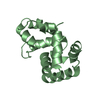 7tvcC 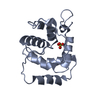 7tvyC 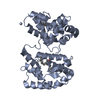 7tx8C C: citing same article ( |
|---|---|
| Similar structure data | Similarity search - Function & homology  F&H Search F&H Search |
- Links
Links
- Assembly
Assembly
| Deposited unit | 
| ||||||||||||
|---|---|---|---|---|---|---|---|---|---|---|---|---|---|
| 1 | 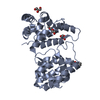
| ||||||||||||
| 2 | 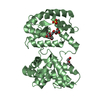
| ||||||||||||
| Unit cell |
|
- Components
Components
-Protein , 1 types, 2 molecules AB
| #1: Protein | Mass: 34892.090 Da / Num. of mol.: 2 Source method: isolated from a genetically manipulated source Source: (gene. exp.)  Production host:  |
|---|
-Non-polymers , 7 types, 137 molecules 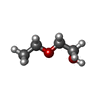

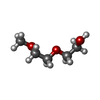

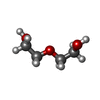








| #2: Chemical | | #3: Chemical | #4: Chemical | #5: Chemical | #6: Chemical | ChemComp-PEG / | #7: Chemical | ChemComp-EDO / | #8: Water | ChemComp-HOH / | |
|---|
-Details
| Has ligand of interest | N |
|---|---|
| Has protein modification | Y |
-Experimental details
-Experiment
| Experiment | Method:  X-RAY DIFFRACTION / Number of used crystals: 1 X-RAY DIFFRACTION / Number of used crystals: 1 |
|---|
- Sample preparation
Sample preparation
| Crystal | Density Matthews: 2.43 Å3/Da / Density % sol: 49.32 % |
|---|---|
| Crystal grow | Temperature: 298 K / Method: vapor diffusion / pH: 7.5 Details: 30%P EG 5000 MME, 0.2 M ammonium sulfate, 0.1M HEPES |
-Data collection
| Diffraction | Mean temperature: 95 K / Serial crystal experiment: N |
|---|---|
| Diffraction source | Source:  ROTATING ANODE / Type: RIGAKU / Wavelength: 1.54178 Å ROTATING ANODE / Type: RIGAKU / Wavelength: 1.54178 Å |
| Detector | Type: RIGAKU SATURN A200 / Detector: CCD / Date: Aug 12, 2020 |
| Radiation | Protocol: SINGLE WAVELENGTH / Monochromatic (M) / Laue (L): M / Scattering type: x-ray |
| Radiation wavelength | Wavelength: 1.54178 Å / Relative weight: 1 |
| Reflection | Resolution: 2.4→29.39 Å / Num. obs: 24809 / % possible obs: 94.1 % / Redundancy: 4.78 % / Biso Wilson estimate: 27.19 Å2 / Rmerge(I) obs: 0.065 / Net I/σ(I): 15.77 |
| Reflection shell | Resolution: 2.4→2.46 Å / Rmerge(I) obs: 0.284 / Num. unique obs: 1239 / % possible all: 63.4 |
- Processing
Processing
| Software |
| |||||||||||||||||||||||||||||||||||||||||||||||||||||||||||||||||||||||||||||||||||||||||||||||||||||||||
|---|---|---|---|---|---|---|---|---|---|---|---|---|---|---|---|---|---|---|---|---|---|---|---|---|---|---|---|---|---|---|---|---|---|---|---|---|---|---|---|---|---|---|---|---|---|---|---|---|---|---|---|---|---|---|---|---|---|---|---|---|---|---|---|---|---|---|---|---|---|---|---|---|---|---|---|---|---|---|---|---|---|---|---|---|---|---|---|---|---|---|---|---|---|---|---|---|---|---|---|---|---|---|---|---|---|---|
| Refinement | Method to determine structure:  MIRAS / Resolution: 2.4→29.39 Å / SU ML: 0.3149 / Cross valid method: FREE R-VALUE / σ(F): 1.99 / Phase error: 33.713 MIRAS / Resolution: 2.4→29.39 Å / SU ML: 0.3149 / Cross valid method: FREE R-VALUE / σ(F): 1.99 / Phase error: 33.713 Stereochemistry target values: GeoStd + Monomer Library + CDL v1.2
| |||||||||||||||||||||||||||||||||||||||||||||||||||||||||||||||||||||||||||||||||||||||||||||||||||||||||
| Solvent computation | Shrinkage radii: 0.9 Å / VDW probe radii: 1.11 Å / Solvent model: FLAT BULK SOLVENT MODEL | |||||||||||||||||||||||||||||||||||||||||||||||||||||||||||||||||||||||||||||||||||||||||||||||||||||||||
| Displacement parameters | Biso mean: 30.84 Å2 | |||||||||||||||||||||||||||||||||||||||||||||||||||||||||||||||||||||||||||||||||||||||||||||||||||||||||
| Refinement step | Cycle: LAST / Resolution: 2.4→29.39 Å
| |||||||||||||||||||||||||||||||||||||||||||||||||||||||||||||||||||||||||||||||||||||||||||||||||||||||||
| Refine LS restraints |
| |||||||||||||||||||||||||||||||||||||||||||||||||||||||||||||||||||||||||||||||||||||||||||||||||||||||||
| LS refinement shell |
|
 Movie
Movie Controller
Controller


 PDBj
PDBj





